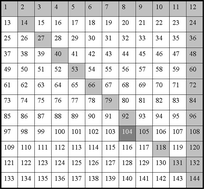In the field of forensic analysis of glass the aim in most cases is to prove or disprove the common origin of two (or more) sources of glass. Glass isolated from clothing of a suspect is compared to broken glass originated from a scene of crime in order to link these together. Based on the given merits, LA-ICP-MS is an excellent tool for the analysis of glass fragments. In this paper, a compromise match criterion for glass casework is established and optimised in order to produce low Type 1 (false negative) error rates and low Type 2 (false positive) error rates at the same time. Glass from two sets (fragments originating from the same float glass pane and fragments originating from different float glass of global origin) were analysed using laser ablation-inductively coupled plasma-mass spectrometry. Comparisons of the quantitative results for 18 element concentrations (Li, Na, Mg, Al, K, Ca, Ti, Mn, Fe, Rb, Sr, Zr, Ba, La, Ce, Nd, Hf, and Pb) were performed using different statistical methods. The best results regarding a compromise match criterion for glass casework were achieved using a modified 4 sigma match criterion based on fixed relative standard deviations, or using t-tests modified analogously by applying the same fixed relative standard deviations. The modified 4 sigma criterion was chosen to be applied in routine casework and has been successfully applied in more than 70 court cases.


 Please wait while we load your content...
Please wait while we load your content...